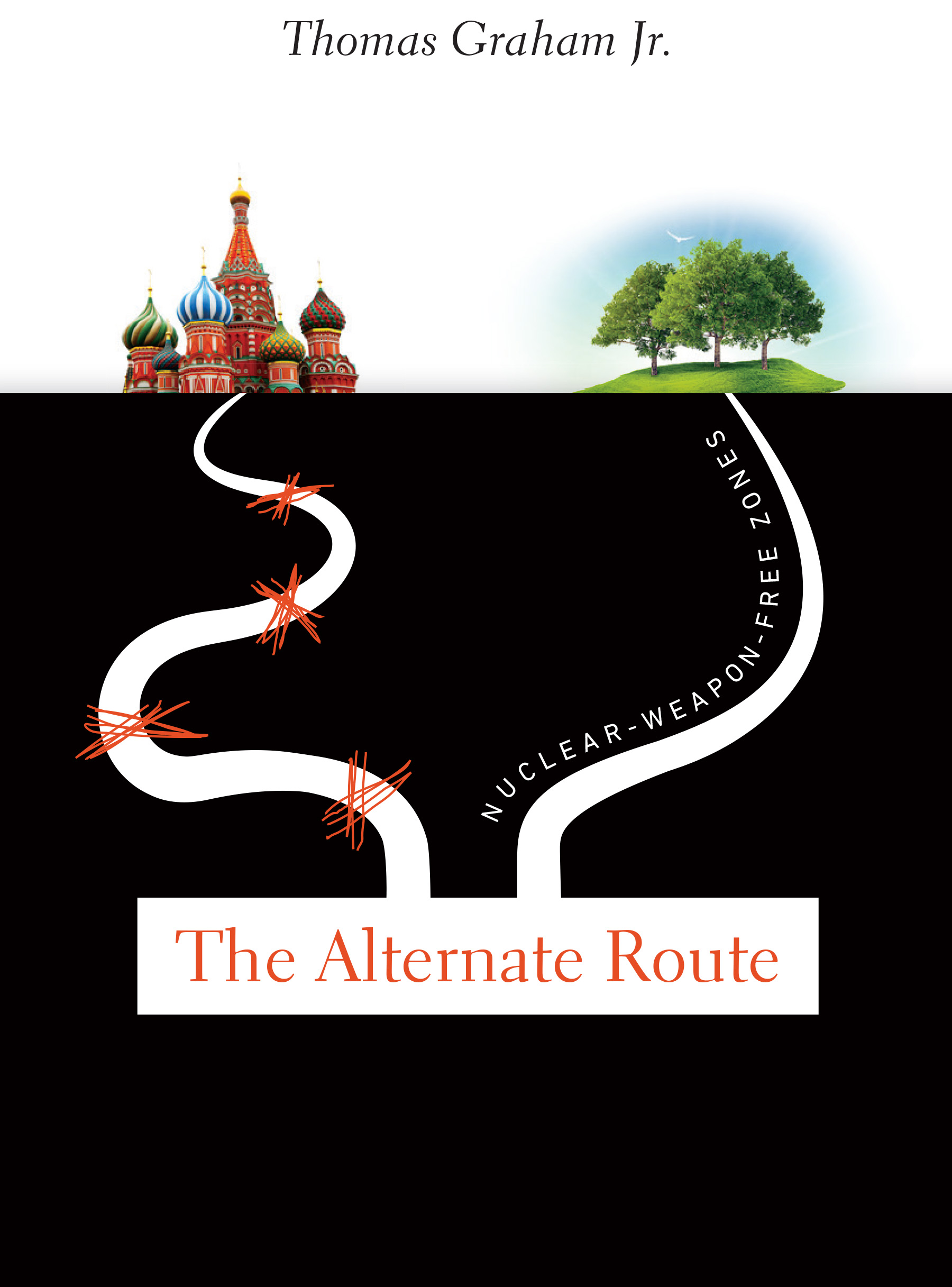University Presses recognize that knowledge matters today, perhaps more than ever. And we are making a difference through scholarship by providing the platform for well-written, well-researched ideas of integrity. New OSU Press author Ambassador Thomas Graham Jr.’s scholarship is making a difference on a global scale. His new book, The Alternate Route: Nuclear Weapon-Free Zones, looks at the frightening international reality of nuclear weapons and examines the possibilities of nuclear weapon-free zones as the pathway to worldwide nuclear disarmament. He gives us a look at this alternate route.
__________________
 Soon after the end of World War II, a vast nuclear arms race began as an integral part of the ensuing Cold War between the two superpowers left standing, the United States and the Soviet Union. During the Cold War and thereafter, the United States built more than 70,000 nuclear weapons, with the Soviet Union creating about 55,000. At its peak, the nuclear weapon stockpile in the United States consisted of some 32,500 nuclear weapons while the Soviet Union kept around 45,000 in its stockpile. Nuclear weapons also spread to additional countries until the 1970 Nuclear Non-Proliferation Treaty largely checked this trend.
Soon after the end of World War II, a vast nuclear arms race began as an integral part of the ensuing Cold War between the two superpowers left standing, the United States and the Soviet Union. During the Cold War and thereafter, the United States built more than 70,000 nuclear weapons, with the Soviet Union creating about 55,000. At its peak, the nuclear weapon stockpile in the United States consisted of some 32,500 nuclear weapons while the Soviet Union kept around 45,000 in its stockpile. Nuclear weapons also spread to additional countries until the 1970 Nuclear Non-Proliferation Treaty largely checked this trend.
As of 2017, the United Kingdom, France, China, Israel, India, Pakistan, and North Korea all possessed nuclear weapon stockpiles; however the number of weapons held by these countries, while certainly still a significant threat, are quite small compared to the number of weapons in the stockpiles of the United States and Russia – even after significant disarmament progress.
Beginning in the 1970s, important nuclear weapon disarmament agreements between the United States and the Soviet Union/Russia were initiated including: the SALT Agreements in 1972 and 1979, the Intermediate Nuclear Forces Treaty in 1987, the Start Treaty in 1991, and the New Start Treaty in 2010. The idea has always been that the two countries possessing in the range of 95% of the world's nuclear weapons would first reduce their stockpiles and then the other states possessing nuclear weapons would be brought into the process with the ultimate objective of worldwide nuclear weapon disarmament and a much safer world.
Unfortunately, the current U. S.-Russian nuclear weapon totals, as discussed, remain far above those of the other nuclear weapon states. And with the return of Vladimir Putin to the Russian presidency in 2012, further reductions appear quite unlikely due to his opposition to further nuclear disarmament and the toxic U.S.-Russian relationship.
But nuclear weapon disarmament is too important to simply put aside. Could there be an alternative route given the failure of the U.S.-Russia way? I explore a possible answer in my new book, Alternate Route: Nuclear Weapon-Free Zones.
The book looks at the threat nuclear weapons represent, explores the U.S.-Russia relationship, discusses the several close calls with nuclear war that have taken place, and examines the nuclear weapon free zone established by each of the five treaties – Latin America, the South Pacific, Africa, South-East Asia, and Central Asia – in detail, including why they were negotiated, how they were negotiated, and their degree of success. These treaties legally put a number of programs associated with nuclear weapons aside. For example: the nascent nuclear weapon programs in Argentina and Brazil; French nuclear weapon testing in the South Pacific; French nuclear weapon testing in the Sahara; the construction of nuclear weapons by South Africa; and the threat of a nuclear weapon program in Libya.
The book discusses where the Nuclear Weapon Free Zone process would need to expand to bring the world community closer to a chance to achieve worldwide nuclear disarmament. In addition to putting pressure on the five Security Council members with nuclear weapons – U.S., United Kingdom, France, Russia, and China – a lot of effort has been expended over the years to try to make disarmament progress in regions like the Middle East, North East Asia, and South Asia with only moderate success. As part of this book, the nuclear weapon programs in Israel, Iran (whose program has not gone to the construction stage because of the Agreement with the United Nations Security Council), India, Pakistan and North Korea are carefully analyzed.
While obviously further expansion of the nuclear weapon free zone process is daunting when one considers where it must go next, it is not an impossible idea. At the very least considering such a concept will cause policy makers and scholars to "think outside the box," which is essential if the moribund nuclear disarmament process is to be revived. Very little has been written about this important process, but it is a subject to which we need to pay more attention for the safety and well being of the world community.
